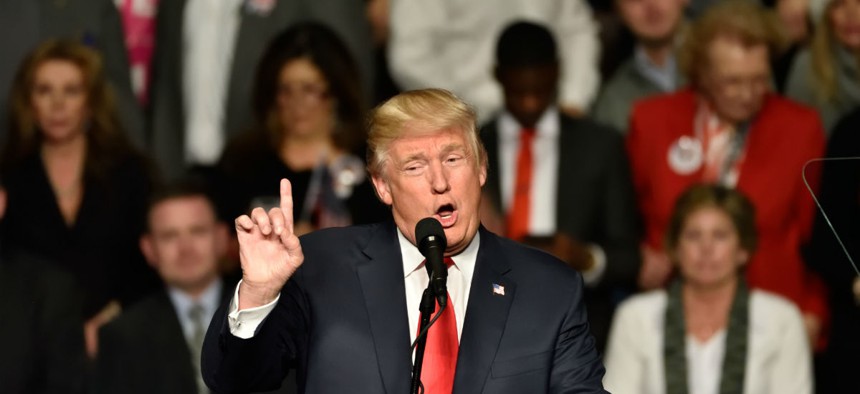
Evan El-Amin/Shutterstock.com
Why You Should Pay Attention to Trump’s Leadership Style
When you have your strategic goals clearly in mind, you’re in a much better position to make smart choices.
Last week I delivered an interactive keynote presentation on “Preparing Yourself to Negotiate” to about 200 global managers and executives. One of the fun things about the session was the cool software we had that allowed the audience to use their phones to contribute to word clouds on my slide deck. The word cloud technology set up a very interesting moment that provides some insight into why, if you’re a leader, you should pay attention to President Trump’s leadership style.
Whether you are Trump, who takes great pride in promoting The Art of the Deal, or a newly promoted executive taking on a game changing negotiation, it’s important to be aware of and intentional about the energetic state you bring to the table. To make that point with my audience, I projected a 2×2 matrix on the screen that measured energy on two different scales: low to high and negative to positive, resulting in four categories of energy: High Positive, Low Positive, High Negative and Low Negative.
I asked the audience to use the word cloud tool to write down words that illustrated each category. For instance, our cloud for High Positive Energy had words like enthusiastic, optimistic, and engaging; Low Positive Energy had words like calm, reflective and measured.
We got to the High Negative Energy cloud and some of the words you might expect—angry, enraged, irritated—appeared. And then someone wrote TRUMP. Actually, more than one person wrote TRUMP because the words in the cloud get bigger as more people enter the same word.
By the time we were done, TRUMP was among the biggest words in the High Negative Energy quadrant.
Everyone seemed to notice the TRUMP entry at the same time and laughter rippled through the room. As I acknowledged the entry and what was going on, it occurred to me that our president is often the embodiment of high negative energy. The early morning tweet storms, the blame-casting when things go awry and the “you’re either with me or against me” threats that the Ppresident engages in on a regular basis are all markers of high negative energy.
Politics aside, it’s interesting to consider if this approach is going to work over the long run. The research on emotionally intelligent leadership styles suggests that it won’t.
Dan Goleman and his colleagues Richard Boyzatis and Annie McKee have demonstrated that leadership styles can be sorted into one of two categories: resonant and dissonant. Resonant styles, when used consistently over time, establish the kind of connection and relationships with people that yield positive results. Dissonant leadership styles, when overused, establish disconnection that causes people to feel disengaged, hopeless and paranoid.
At a high and simple level, you can categorize High Positive and Low Positive behaviors as resonant styles and High Negative and Low Negative behaviors as dissonant styles. That’s not to say that as a leader you should never express your anger, frustration or disappointment. Sometimes you need to do those things to get people’s attention and make a point.
But, spend too much of your leadership energy on the dissonant side of the chart and the people working with you will pretty quickly disengage and withdraw to protect themselves. Others not directly involved but observing—like the people in my audience last week—will see your lack of effectiveness and quite possibly make you the punchline of a joke.
So, what’s the takeaway for leaders who aren’t the POTUS? As I’ve written before, there are two questions you need to ask yourself consistently throughout the day:
- What am I trying to do?
- How do I need to show up to do that?
In asking the first question, you want to be aware and intentional about the people involved and what you’re trying to accomplish with them in both the short run and the long run. In asking the second question, you want to consider the behaviors from the different energy quadrants—High Positive, Low Positive, High Negative or Low Negative—that you need to demonstrate to make it more likely that you’ll accomplish what you’re trying to accomplish.
And that’s why you need to pay attention to Trump’s leadership style. His default move is to go high negative with his energy. (Just read his Twitter feed if you want any proof.) That’s effective some of the time, but not all the time. To be effective as a leader (and a negotiator), you need to shift away from doing or saying whatever pops into your head at the moment to thoughtfully and strategically considering your overall goals. When you have your strategic goals clearly in mind, you’re in a much better position to make smart choices about the optimal mix of resonant and dissonant leadership styles that will help you get there.
Image via Evan El-Amin/Shutterstock.com.







